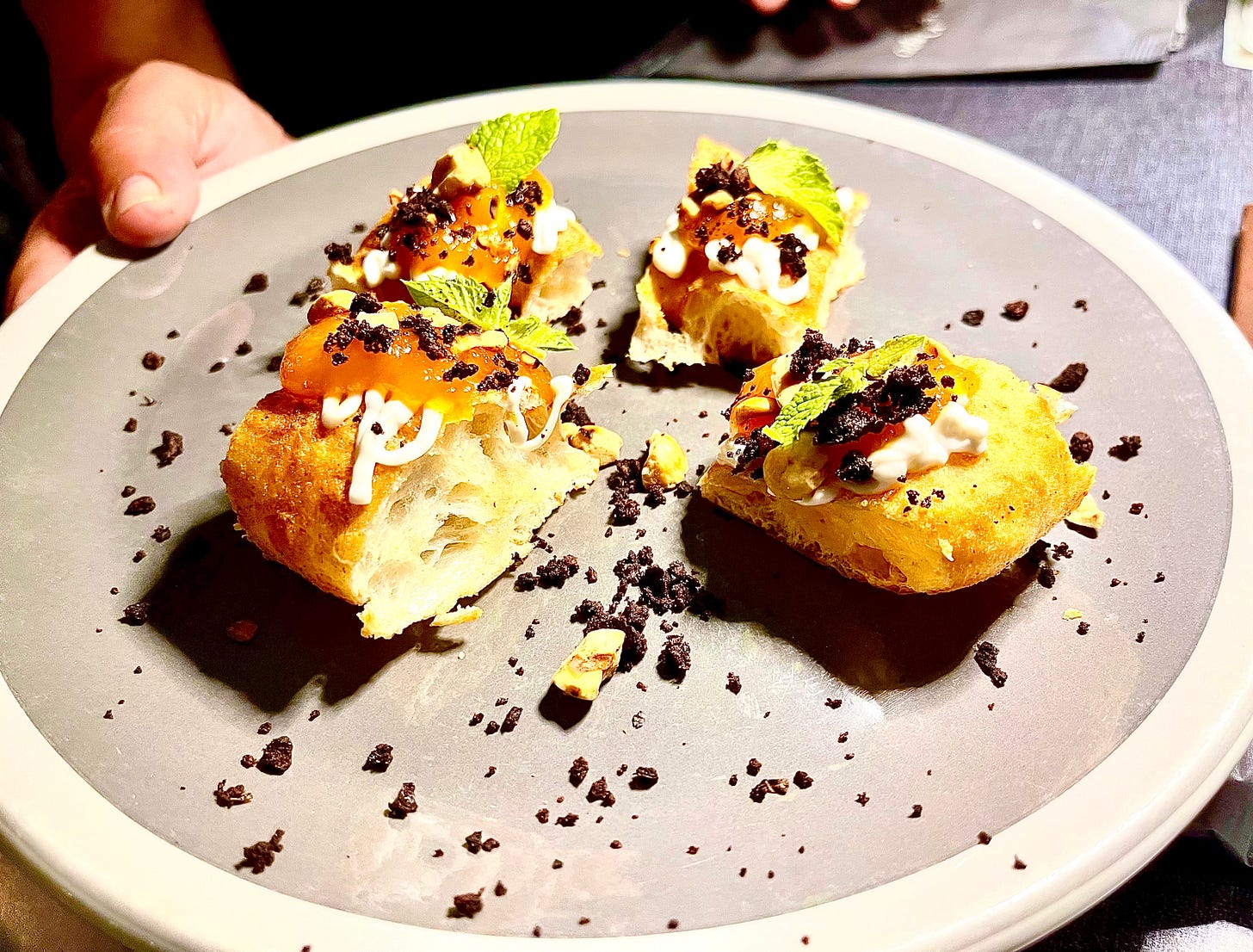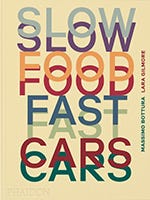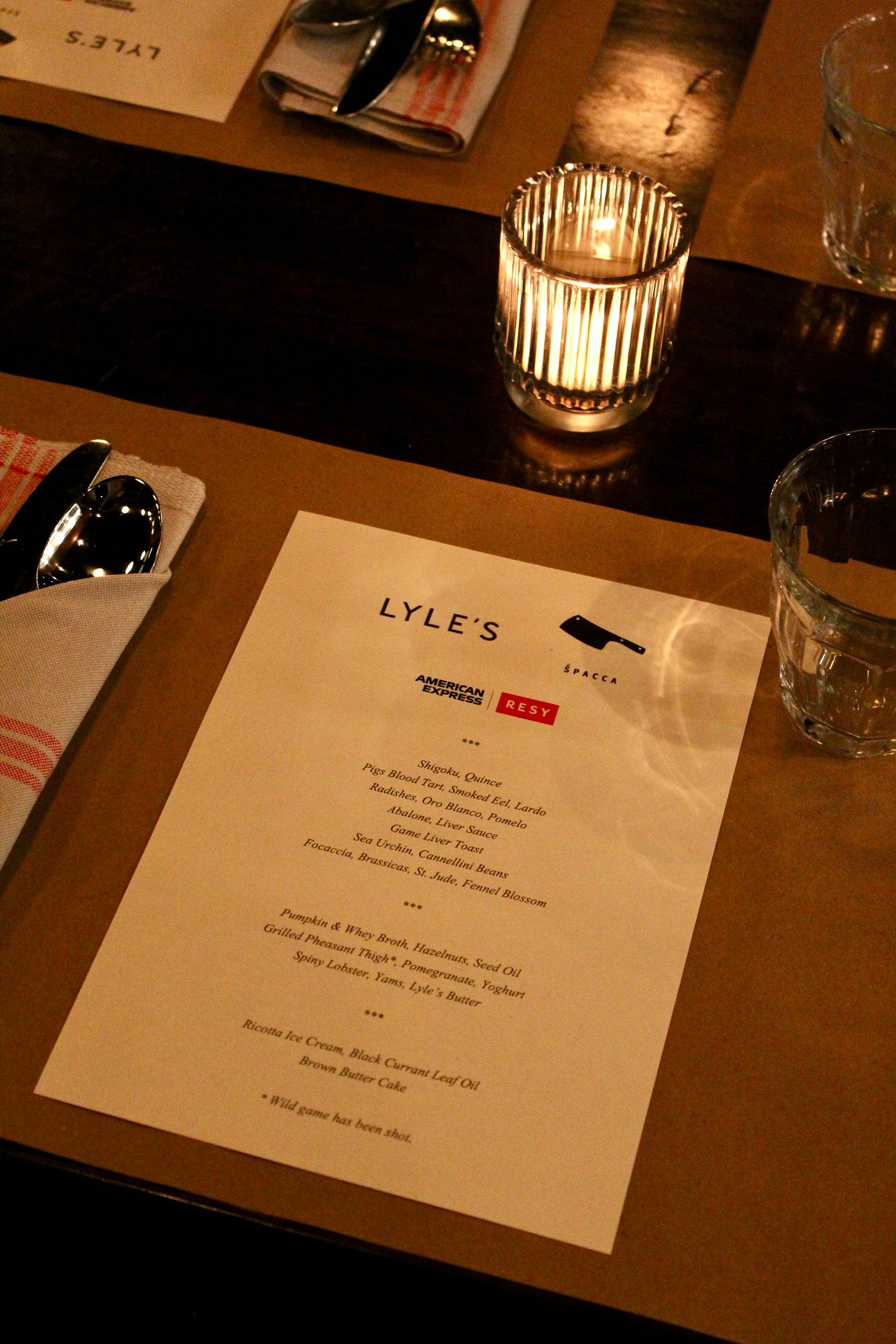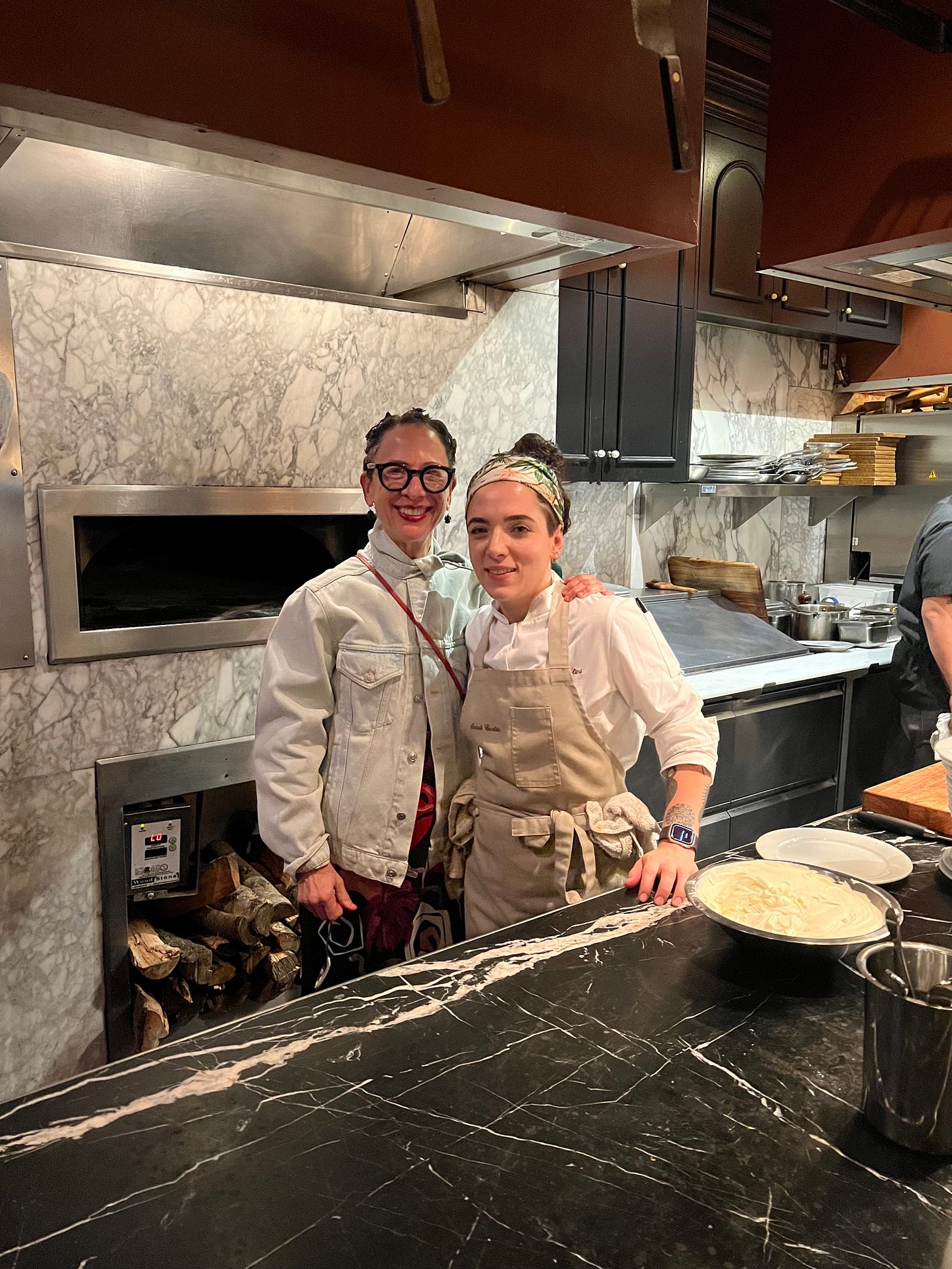Why do we call Nancy the queen of pistachios? What secrets can Ruth tell us about critic bait? And is Laurie really the only one of the three of us who loves tripe? Also, can food be too flavorful? These are just some of the things we’re talking about in today’s episode, including the vanity of cooking. We dish on show-off chefs and why Nancy says Thomas Keller and Massimo Bottura don’t fit in that category. We talk about why we love Sarah Cicolini’s Rome restaurant Santo Palato and the Pie Room at London’s Holborn Dining Room. Plus, why chefs like Italy’s Franco Pepe and Nancy use dehydrators. And could it be that writer and former “Great British Bake Off” finalist Ruby Tandoh is this generation’s Laurie Colwin? But first, let’s talk pine nuts.
A better pine nut
Would you be shocked to learn that the pine nuts you’re most likely using in your pesto come from China or Siberia?
Nancy, of course, knew all about this. But Ruth remained ignorant until a few years ago, at a market in Italy she noticed that the pinoli were much larger than the ones she buys at home.
Back in her own kitchen, she scrutinized the pine nuts in her freezer. (Pine nuts are filled with oil, which means that left in the cupboard they quickly go rancid. It’s much safer to store them in the freezer.) Sure enough, the label said something about the various countries the pine nuts might have come from, and not one of them was Italy or the United States.
She took out a handful and laid them next to the ones she’d bought in Italy. Half the size! Then she tasted them. Half the flavor! These days she buys her pine nuts from Gustiamo, which owner Beatrice Ughi gets from the west coast of Italy where Pinus Pinea trees, better known as Italian stone pines or umbrella pines, grow. They’re expensive. And they’re worth it.
Pro tip from Nancy, who gets pine nuts from Sicily for her Mozza restaurants but also uses the smaller, more common varieties of pine nuts for big batches of pesto. Use pricey larger Italian pine nuts when you want to serve the pine nuts whole, as in the rosemary-pine nut cookies she serves at Pizzeria Mozza with her famous butterscotch budino — we’ve got a recipe below.

And if, like Laurie, you were wondering why we don’t just harvest pine nuts from all the pine trees grown in the U.S., here are two articles from 2017 that explore the issue: Modern Farmer calls “the downfall of the American pine nut industry, a truly embarrassing and damaging loss given that the pinyon species in North America can produce nuts (seeds, technically) worth upwards of $40 per pound.” The magazine cites a Civil Eats report that puts part of the blame on a U.S. Bureau of Land Management practice of clearing “thousands of acres” of piñon-juniper woodlands for cattle grazing between the 1950s and ‘70s because the trees were “useless as timber.”
The pistachio queen dehydrates
Nancy practically lives on Turkish pistachios, which are smaller and more flavorful than the American kind. She’s particularly partial to pistachios from Aleppo. There are many sources; one we like in New York is Russ and Daughters.
Nancy also loves Sicilian pistachios. But as she discusses in the podcast, if you want to get the nuts both green and crunchy, you’re going to need a dehydrator. “That is,” she says, “the best purchase I’ve ever made.” This Magic Mill is a favorite.
Another unexpected chef who uses a dehydrator is Slow Food hero Franco Pepe, who is also Nancy’s favorite pizzaiolo. She rarely spends time in Italy without making a visit to Pepe in Grani, his restaurant in Caiazzo outside of Naples. In fact Nancy is the one who persuaded restaurant critic Jonathan Gold (and Laurie’s late husband) to come to Caizzo for a 2014 Food & Wine article in which he said Franco Pepe made what “is probably the best pizza in the world." Many others, including our friend and Italian food expert Faith Willinger, who first told Nancy about Pepe, agree.
So what does a chef like Pepe, who insists on hand mixing his dough and calibrates his pizzas to show off the freshness of his region’s ingredients do with a dehydrator? For one thing, he dehydrates olive and puts them on a dessert pizza with apricots sourced from the volcanic soil of Vesuvius. It’s fantastic. Laurie talked to him for the L.A. Times about what tech can do to save pizza’s future. Read about it here.

The Colwin legacy
Ruby Tandoh! Ruby Tandoh! If you want to read the article we all love — the one that got Ruth to suggest that Tandoh might be this generation’s Laurie Colwin — here it is. Note the excellent title: “The Studied Carelessness of Great Dessert: On croquembouche, Alison Roman, and the art of not trying too hard.” And just in case you don’t know Colwin’s work, here are two stories, one from the New Yorker and one from the New York Times, that talk about the Colwin legacy. As for Tandoh’s Vittles — if you’re not reading it, you’re missing out. You can find it here.
Mind and heart
That is Massimo Bottura trying to make Nancy happy. Which he always does. You probably know that his small restaurant in Modena, Osteria Francescana, has three Michelin stars and was voted the best restaurant in the world twice on the World’s 50 Best list and remains on its Best of the Best list. You might also know that he’s a chef with an extremely interesting mind and a huge heart, who is deeply involved with feeding the hungry of the world.
We’ve known (and admired) both Massimo and his elegant American wife Lara Gilmore for a while now. But although Laurie and Nancy had eaten at his Modena restaurant many times, Ruth was late to the game.
This is part of what she wrote in 2017, after her first marathon lunch at his restaurant:
Leave it to me to go to a four-hour lunch on a day of such intense heat the newspaper headlines all read “Dangerous even for the animals.” (For the record, it hit 107 degrees.) … We arrived parched and almost dizzy with heat.
Within seconds, we’d forgotten everything but the pure pleasure of listening to Massimo and Lara discuss their various projects (a refettorio in London, another in Burkina Faso and a gelateria in a refugee camp in Greece) — and the meal they were about to serve us.
Blown away. That’s my instant review. If you want more, keep reading.
For another perspective on Massimo’s food, Laurie wrote in the L.A. Times about the meal she ate at Osteria Francescana earlier this summer when the chef was revisiting and reconceiving many of his iconic dishes, including tortellini. “Bottura may break the form of a classic dish,” she wrote, “but he almost always brings the flavor back to the nostalgic tastes of his childhood.”
Incidentally, Massimo and Lara have a new book, Slow Food Fast Cars, and they will be discussing it with Ruth on Monday night, Dec. 11, at the 92nd Street Y in Manhattan. Come join them!
Best comment of this episode?
Nancy on croquembouche: “Struggling with your food is not a fun way to cook.”
The London Restaurant List
Here are the London restaurants Nancy mentions in this episode.
The Palomar: The Pie Room at the Holborn Dining Room
Pop Quiz!
Can anyone guess the name of the chef standing next to Nancy?
Want a recipe from Nancy?
If you want recipes inspired by the episode, bonus podcast conversations and more exclusive content from Ruth, Nancy and Laurie, sign up to be a “Three Ingredients” paying subscriber. With this episode, we’re sharing the recipe for Nancy’s famous Butterscotch Budino with Caramel Sauce and Rosemary Pine Nut Cookies. And in our bonus podcast conversation, Ruth has thoughts on the demon cider that kept Americans drunk on apples as well as an easy, delicious recipe for butternut squash with apple cider syrup. Plus, we’ll give you the answer to the pop quiz above.

































Share this post